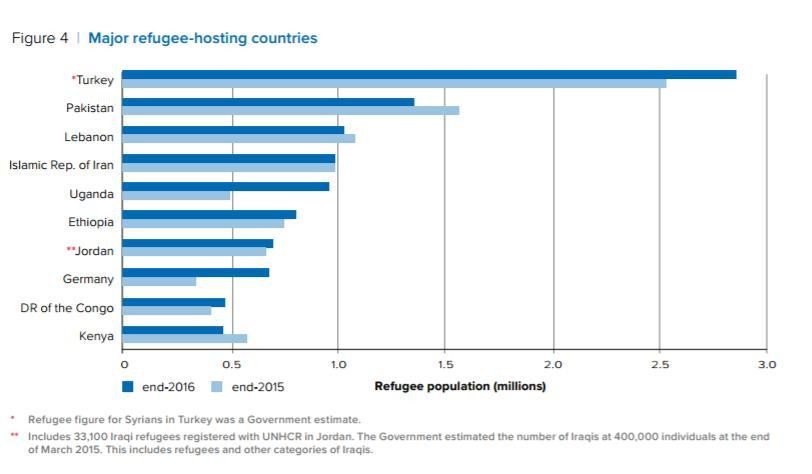84% of refugees live in developing countries

Some of the world's poorest nations are the most receptive to refugees
Image: REUTERS/James Akena
Stay up to date:
Migration
The world's poorest countries continue to shoulder the burden of the global refugee crisis, according to the UNHCR’s latest annual Global Trends report.
The report finds that developing regions host 84% of the world's refugees under the UNHCR's mandate.
Meanwhile, some of the poorest countries in the world granted legal asylum status to a growing number of refugees - 28% of the global total.
This places a heavy burden on economies struggling to grow and with few extra resources to support new people coming in.
Partly this reflects the lack of international consensus when it comes to homing refugees, but is also due to the fact many conflict-ridden countries are surrounded by poor neighbours.

At the end of 2016, there were 65.6 million people forcibly displaced worldwide – an increase of 300,000 from the previous year. Meanwhile, the global number of refugees stands at 22.5 million. More than half of these (55%), come from just three countries: Syria, Afghanistan and South Sudan.

Turkey hosts the most refugees
Turkey hosted almost 3 million refugees in 2016, the largest population of any country. Most of these fled from conflict in neighbouring Syria, with refugee numbers climbing by nearly half a million - from 2.5 million to 2.9 million - in the space of a year.
Pakistan has the second largest refugee population, despite overall numbers falling since many have returned to their home country. The majority of its 1.6 million displaced inhabitants come from Afghanistan.

Germany is the only European country in a list of the top 10 host nations; it saw a massive jump in the size of its refugee population in 2016. Numbers almost doubled to 669,500 over the course of the year after a change in the treatment of asylum claims.
Meanwhile, in Lebanon, one in six people was a refugee in 2016 meaning that the country had the largest number of displaced people relative to its own population. Again, most of the 1 million people seeking refuge in the country come from Syria, although a significant proportion originate from Iraq.

Growing unrest in the world’s newest country, South Sudan, means it became the fastest-growing source of new refugees last year. This group grew by 64% during the second half of the year, to 1.4 million, the majority of whom were children. As a result, Uganda saw a massive hike in its refugee population, which almost doubled to just under a million.
Don't miss any update on this topic
Create a free account and access your personalized content collection with our latest publications and analyses.
License and Republishing
World Economic Forum articles may be republished in accordance with the Creative Commons Attribution-NonCommercial-NoDerivatives 4.0 International Public License, and in accordance with our Terms of Use.
The views expressed in this article are those of the author alone and not the World Economic Forum.
Forum Stories newsletter
Bringing you weekly curated insights and analysis on the global issues that matter.
More on Youth PerspectivesSee all
Laura Henderson
June 4, 2025
Christie Burley and Lindsey Prowse
May 20, 2025
Kulé Galma
April 15, 2025
Roberta Bosurgi and Ruma Bhargawa
March 7, 2025





